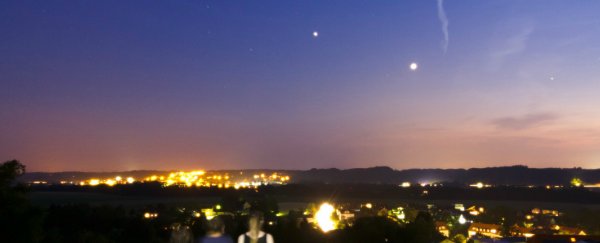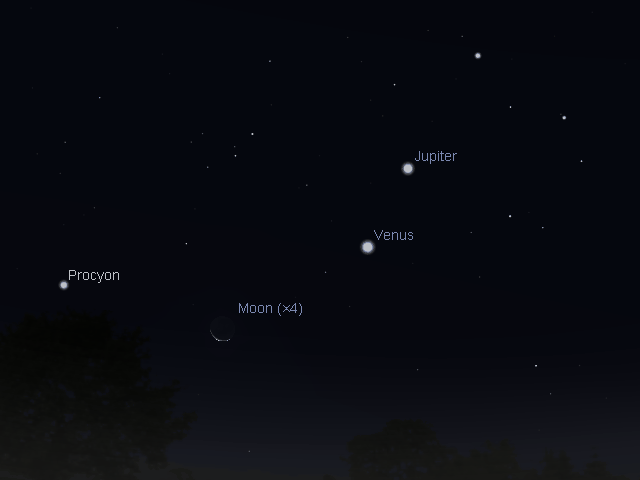In these final days of June 2015, the two brightest planets in the night sky are putting on one hell of a show. For skywatchers here on Earth, Venus and Jupiter have steadily been drawing closer together since the start of the month, and will appear to converge completely on June 30, resembling one super-bright planet in the night sky. It's the closest the two planets will appear to us until August 2016.
The best part is that you don't need binoculars or a telescope to see the planets - they're so bright that they're visible to the naked eye, and can even be seen during the day at certain times. And for once, you can see the event from anywhere in the world. All you need to do is look to the west for a few hours after sunset.
But if you do have a telescope, the view gets even better, with NASA reporting that gazers should be able to see Venus as a waning crescent, and Jupiter surrounded by its moons. Over the weekend, skywatchers would have been able to see both of those things right next to the craters of our own Moon, as Venus, Jupiter and the Moon lined up to form a perfect triangle in the night sky.
This gif created by Astroblogger shows the progression of the two planets in the night sky over the next couple of days.
Of course, Venus and Jupiter actually aren't getting any closer to each other at all: they're still more than 800 million kilometres apart. But they look closer together to us because of where both planets are in their respective orbits around the Sun. Because Jupiter is much further from the Sun than Venus, it takes much longer to complete a full rotation, and this means that Venus occasionally laps it.
When this happens, the two bright planets pass each other in our night sky and look more like one big double star. This convergence will happen on the night of June 30 in the United States and other western countries, and July 1 in Australia and the East.
"On that night, Venus and Jupiter will be a jaw-dropping 1/3rd of a degree apart. That's less than the diameter of a full Moon. You'll be able to hide the pair not just behind the palm of your outstretched hand, but behind your little pinky finger," explains the team over at NASA Science in the video below.

Find out more about how to where to watch and how here. Happy star-gazing!

